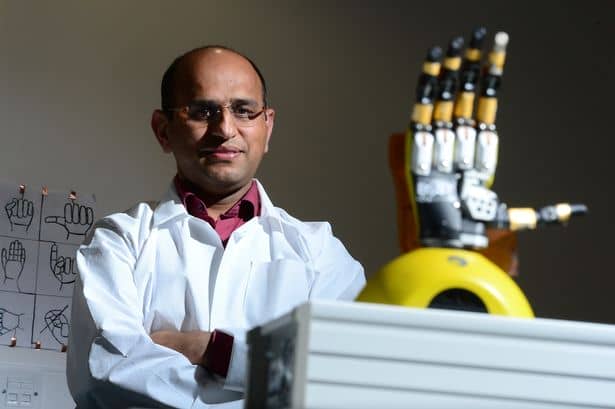Millions of amputees all around the world rely on prosthetic limbs to perform basic day to day tasks. Not all of them have access to the advanced high-tech versions that normalize life for them. Even the best of these do not grant the user a sense of touch. A team of researchers at the University of Glasgow has created prosthetic e-skin that can give a robot or a person with a prosthetic limb, a sense of touch, the power to feel temperature or pressure.
The research paper titled, “Energy-Autonomous, Flexible, and Transparent Tactile Skin” was published in Advanced Functional Materials. It describes that the artificial skin has the ability to respond to sensors making the functionality of a prosthetic limb more efficient. The skin is made up of a single layer of transparent and sensitive graphene. A photovoltaic cell underneath the graphene layer powers the electronic skin using sunlight. The transparency of the graphene layer aids the photovoltaic cell in harnessing more sunlight. A square centimeter of the skin requires only 20 nanowatts of power, thus reducing the need for a large photovoltaic area. Another complex layer of materials deals with the sensing of the e-skin.
The team covered a prosthetic hand with the newly invented e-skin to test the performance. Then they gave the hand a command to hold a softball and recorded the results before and after, enabling the tactile feedback sensor.
Among other challenges, the major one was harnessing just enough energy required for the functionality of the skin. The photovoltaic cell sources much more energy than is needed and currently there is no way of storing that energy. The team is working to develop a way of storing the extra energy. The technology is aimed to improve the functionality of robots by adding sensitivity characteristics to reduce errors. The energy harnessed by the skin may also be used for powering the motors in the limb.
The lead of the research, Dr. Ravinder Dahiya is hopeful that in the next two years, a prototype arm with the prosthetic e-skin will be developed. It is a major breakthrough that will make lives of amputees much easier once it is in the market.

